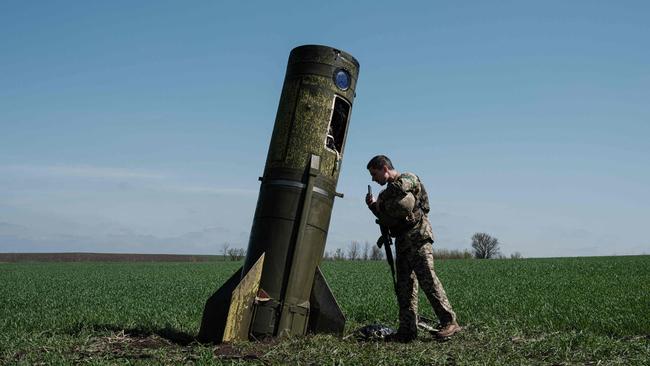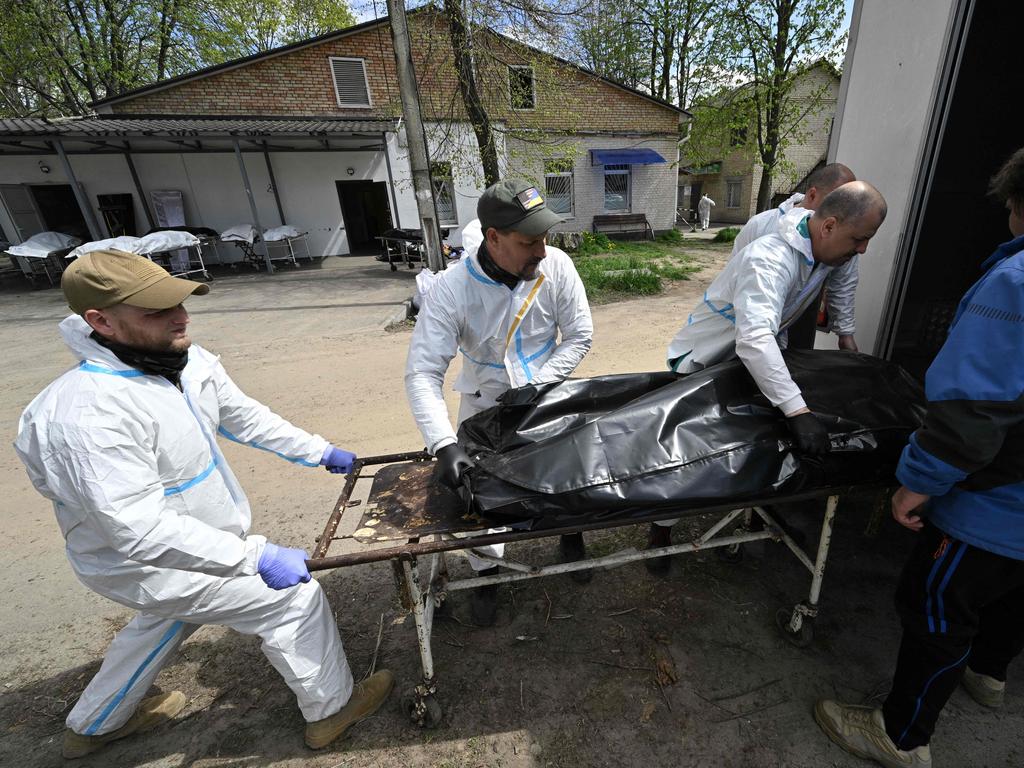After Russian retreat, farmers discover fields full of mines
Damage to farmland threatens long-lasting disruption to food supplies from the region.

Russian forces have riddled Ukrainian fields with mines and destroyed equipment in areas they once occupied, in what returning farmers and the Kyiv government allege is a campaign by Moscow to hobble the country’s agricultural industry.
Russia’s invasion has devastated shipments of corn, wheat and sunflower oil from what was one of the world’s biggest food exporters. Prices have soared, adding to global inflation and heaping misery on developing countries dependent on imports from the region.
The extent of damage, together with port disruption and a fertiliser shortage, demonstrates how the war’s affect on Ukraine’s agriculture could extend well into next year.
When Russian troops pulled out of areas around Kyiv, they left shattered buildings and were accused of war crimes. Farmers in northern Ukraine say they have returned to fields littered with mines, unexploded ordnance and craters. Several workers have been killed, and the work has been placed on hold in some areas.

Alex Lissitsa, chief executive of IMC, one of Ukraine’s largest agricultural companies, said his workers should be planting sunflowers and corn on 30,000ha north of Chernihiv but can’t because of unexploded shells and mines. “It looks like this year, or even the year after, we will not be able to do anything here,” Mr Lissitsa said. The company also lost a grain storage facility, a chemicals laboratory and equipment to Russian shelling.
Mr Lissitsa said he frequently hears of deaths related to mines, adding that a worker on a neighbouring farm was killed when his tractor ran over one.
The Ukrainian government estimates that mines are present in around 30 per cent of farm fields in areas around Kyiv previously occupied by the Russians.
Taras Vysotskyi, Ukraine’s deputy minister of agrarian policy and food, said it was clear the targeting of agriculture was deliberate because the Russians placed mines in fields of no military value and continued to do so even as they withdrew. “It was the case of blocking the possibility of making agriculture productive again in Ukraine,” he said.
The two regions the Russians sabotaged are among the Ukraine’s most productive.
Despite having been sent photos of damage to his farm near the northern city of Chernihiv, Petro Melnyk said he wasn’t prepared for the extent of the destruction when he returned two weeks ago.
“The Russians specifically want to stop farms,” said the co-owner of Agricom Group, which has farms across Ukraine.
Mr Melnyk said his properties had been heavily bombed, destroying buildings, tractors and other machinery, although no known Ukrainian military positions are nearby.
To be sure, not all farmers think they were deliberately targeted. Dmitry Skorniakov has found Russian mines on parts of his 8000ha in the Sumy and Chernihiv regions but he believes that they were intended for the Ukrainian military rather than to hurt agriculture, partly because mines were at the edges of fields.

Either way, the damage to farming capacity and the continued occupation of farmland in Ukraine’s east and south is a blow to an industry that provides 10 per cent of global wheat exports, 14 per cent of corn exports and about half of the world’s sunflower oil. The World Bank has warned of a global food catastrophe stemming from the Russian invasion.
Farmers are waiting for the military to clear the mines and munitions, which could take a while. Evgeniy Kharlan, who farms asparagus and blueberries, asked the military to clear unexploded munitions on his land close to the front line in eastern Ukraine and was told that clearing cities and towns was a higher priority. Mr Kharlan also said the military told him to avoid his other farm, near Chernobyl, because of the risk posed by mines.
The delay in getting back to work likely will reduce the harvest this year and potentially next, Mr Kharlan said, adding that only around 30 per cent to 40 per cent of his fields were now being farmed.
The Ukrainian government predicts 25 per cent less land will be planted this spring than usual.
Mr Lissitsa’s corn fields would typically yield around 10 tonnes per hectare.
“Now, I would be happy with eight tonnes a hectare, but it will definitely be less,” he said.
In the face of the challenges, farmers are racing against the clock. “We should be finished planting by the latest 20th May,” Mr Lissitsa said last week. “We have only 25 days to plant.”
The Wall Street Journal






